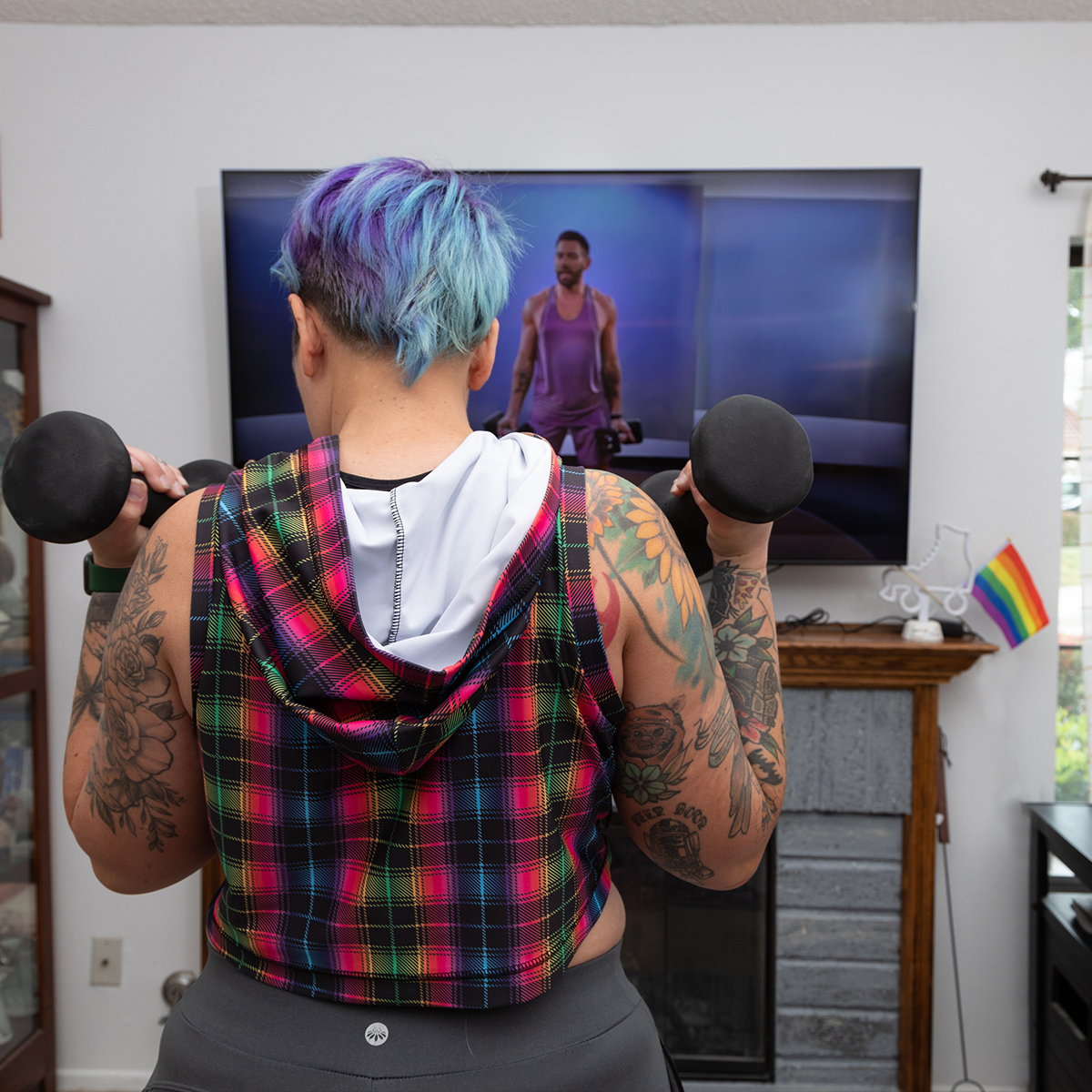
Why You Should Take Peloton Strength Classes More Than Once
Consistency is key when it comes to getting stronger.
By Colleen Travers•
With new Peloton classes dropping regularly, you might be tempted to continually fill your stack with workouts you’ve never taken before. Variety is the spice of life, after all. But when it comes to strength training, there are big benefits to repeating classes instead of always switching it up. Here’s how repetition in your class rotation can help you get stronger, improve your range of motion, and limit your risk from injury.
Strength Training Is a Skill
“I love to look at strength training as a skill,” says Peloton instructor Callie Gullickson. “In order to get better at any skill, you have to practice it.” One of the basic building blocks of a strength-training program or class is having proper form. This can be difficult to master if you’re constantly changing classes. By repeating the same class, you’ll ensure you’re doing the exercises correctly (and safely). This in turn will make you stronger and give you the greatest range of motion, two things that will help you PR on the Peloton Bike or Peloton Tread. “Building strength requires consistency and repetition in order for your body to adapt to resistance and the load you put on it,” says Callie. “Plus, by repeating classes, you’ll also be able to track your progress, which will help show if you are building muscle or if you’ve reached a plateau.”
Repetition Doesn’t Mean Everything’s the Same
You may be cycling through the same strength-training classes, but that doesn’t mean you’ll be doing the exact same thing during all your workouts. “Your body can still be challenged during a repeat class by doing what’s called a progressive overload,” says Callie. “This is a gradual increase of stress on the body, be it by adding reps, picking up heavier weights, or trying advanced variations of the exercises you’re doing.”
When to Repeat (and When to Move On)
Repeating classes takes a little bit of planning but looking ahead will keep you accountable to hit your fitness goals. “Rather than do the same class multiple times in one week, I recommend repeating classes week to week,” says Callie. This means that you’ll do the same two to three strength-training classes on the same days of the week for a few weeks. If you feel yourself plateauing, even after doing a progressive overload, it’s time to focus on the next set of strength classes.
“Another thing to look out for is muscular imbalance,” adds Callie. “You never want to favor one muscle group over another as it can lead to weak or overworked muscles. So, if you find your quads seem to be stronger than your hamstrings (or vice versa), the exercises you’re repeating may not be working the entire leg muscle effectively anymore. Choose a new workout to ensure proper mobility and prevent adding excess stress on other areas of the body to overcompensate for muscle weakness elsewhere.”
And finally, make sure you still leave room in your schedule for recovery day. “Repeating classes still means you need to work in enough time to rest,” says Callie. “Recovery is an important part of strength training and helps you get stronger just as much as working out does.”
Read on to find out how to choose the right weights for your training.